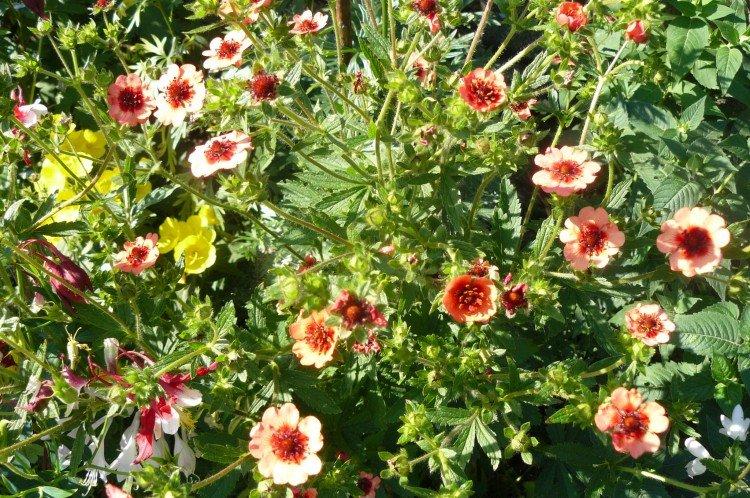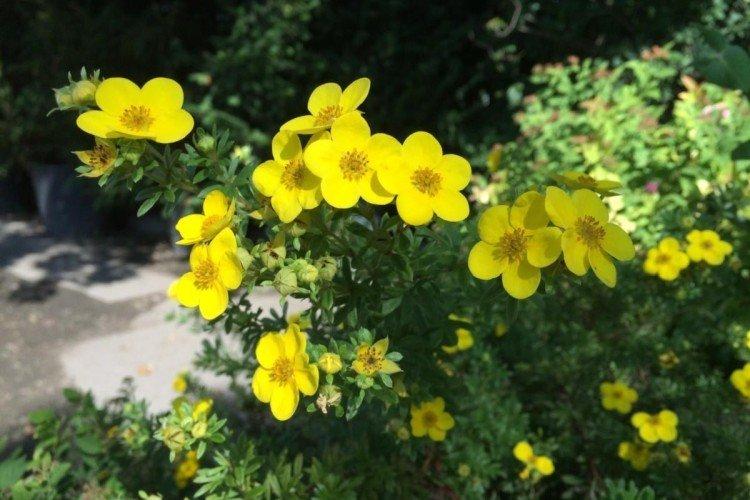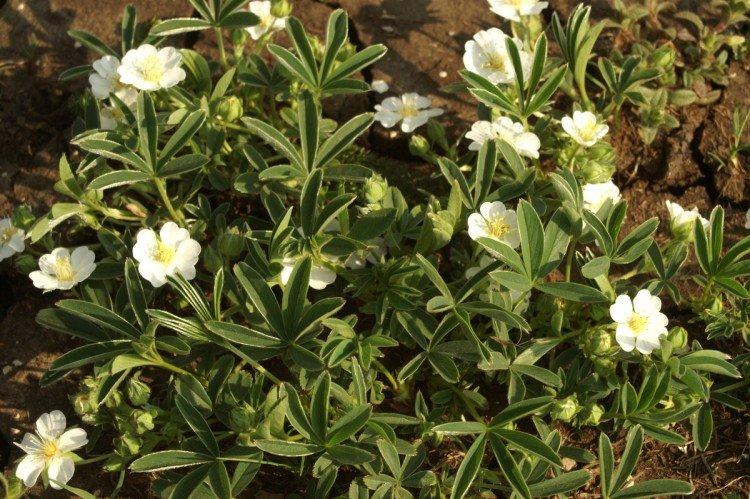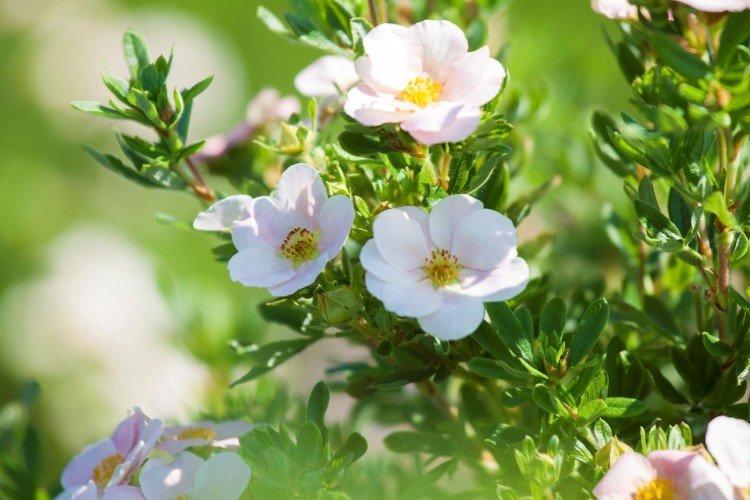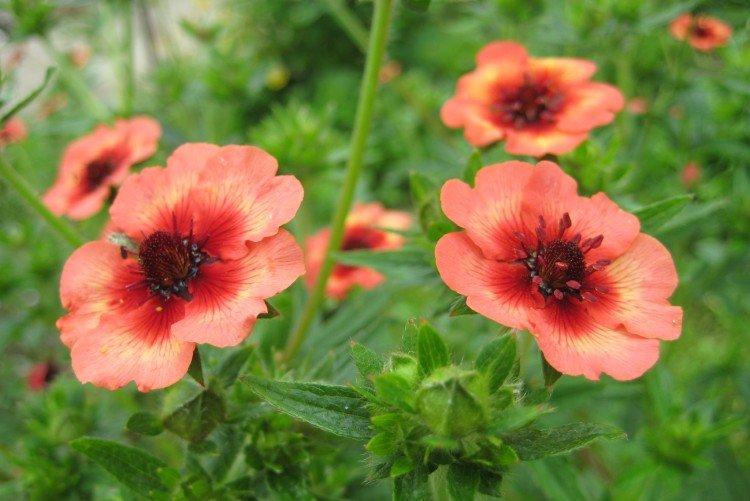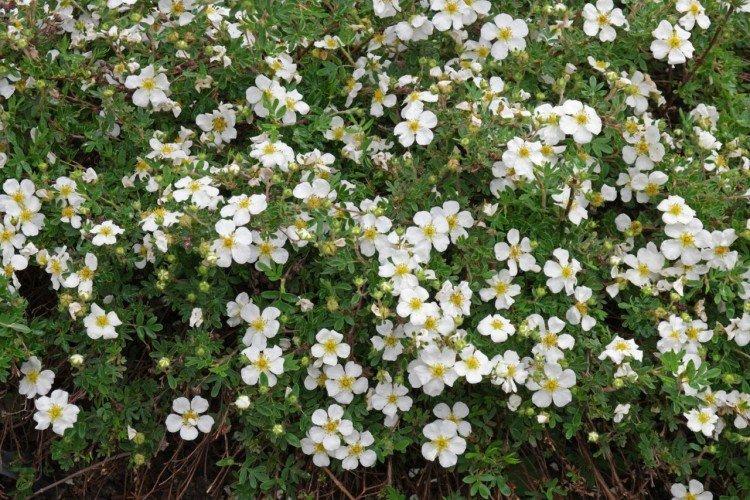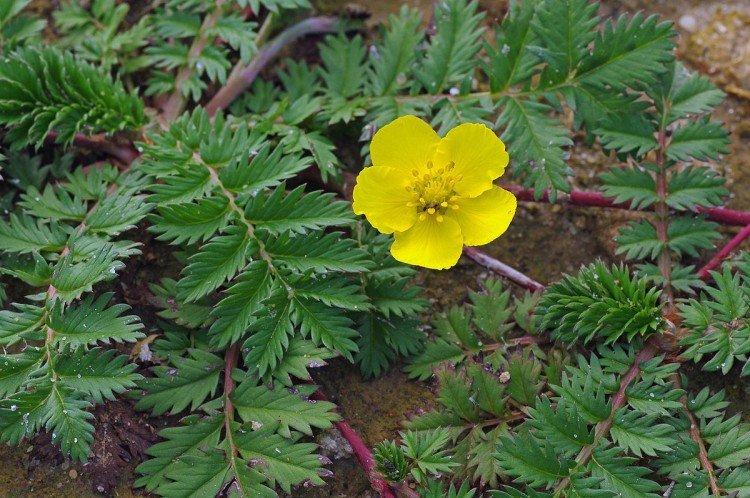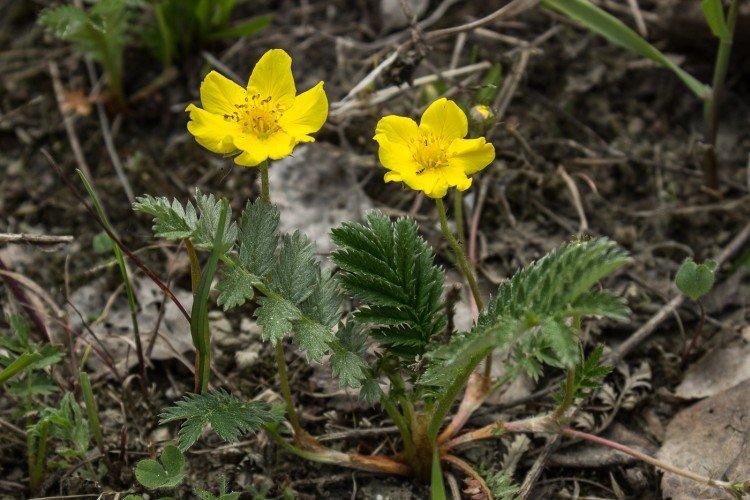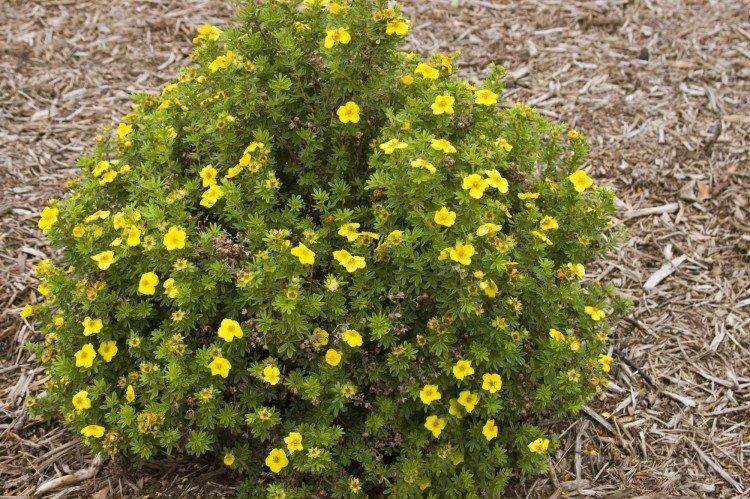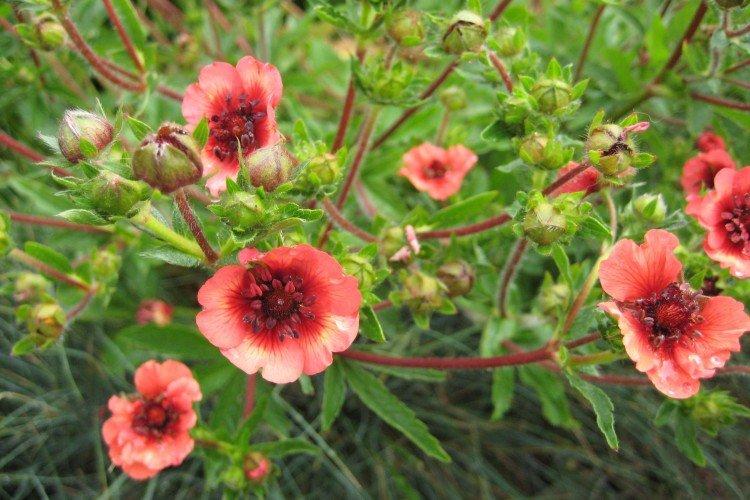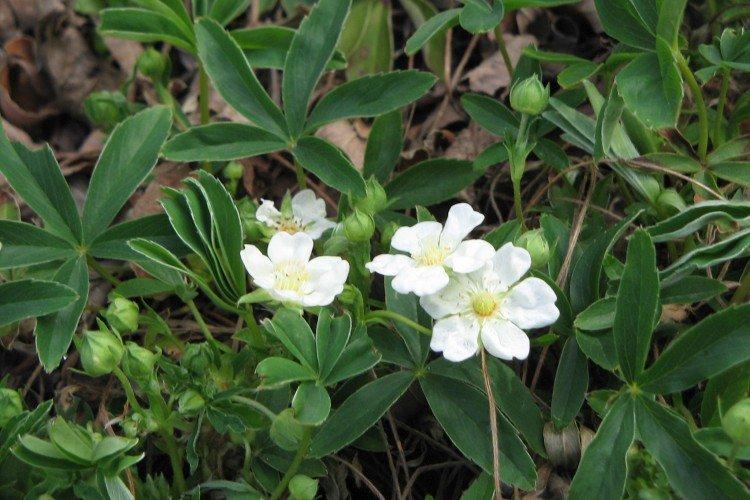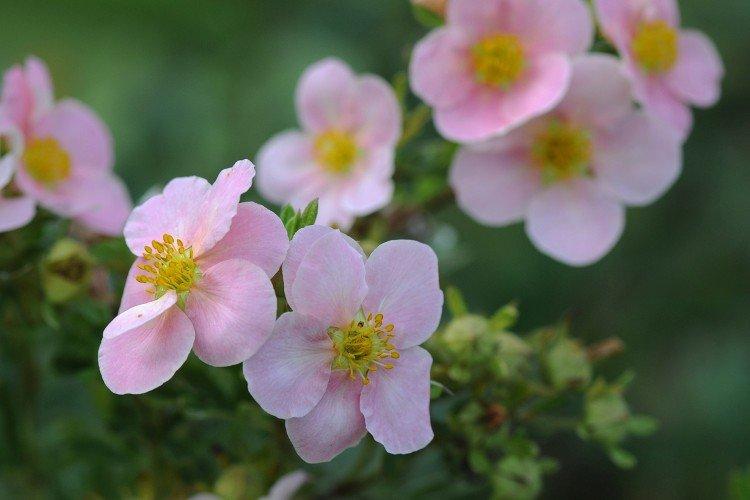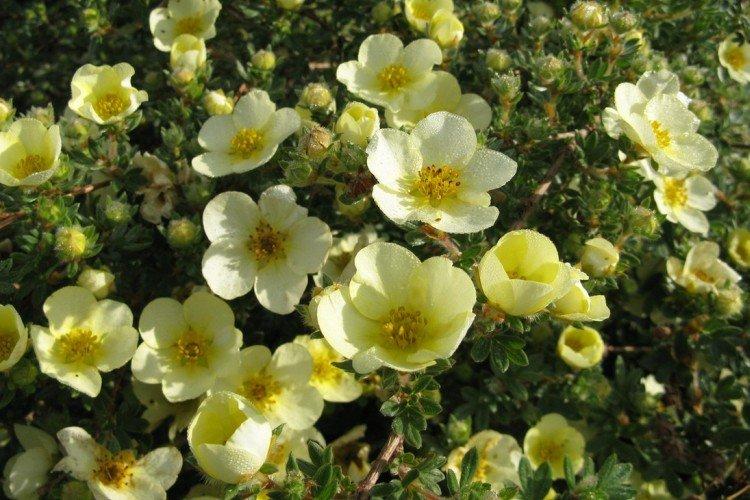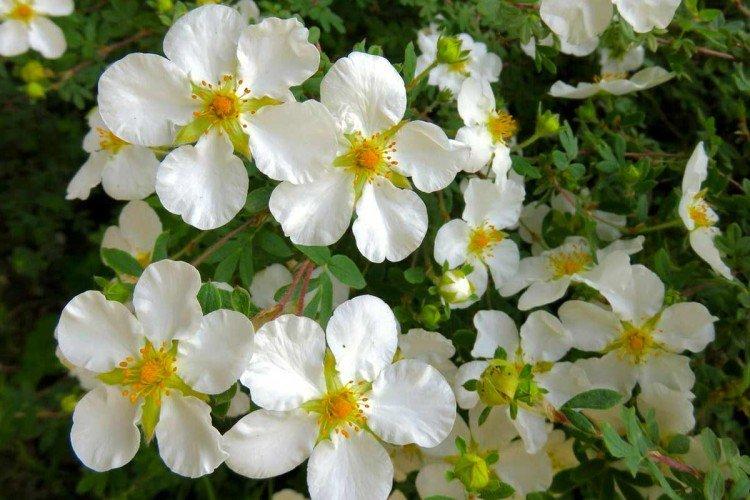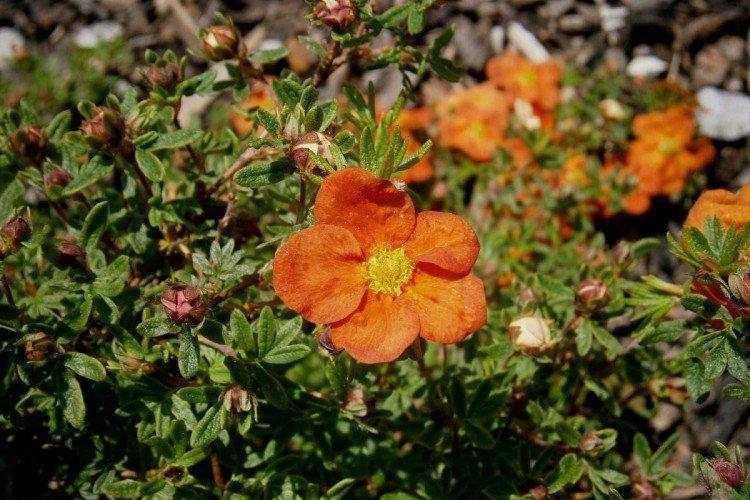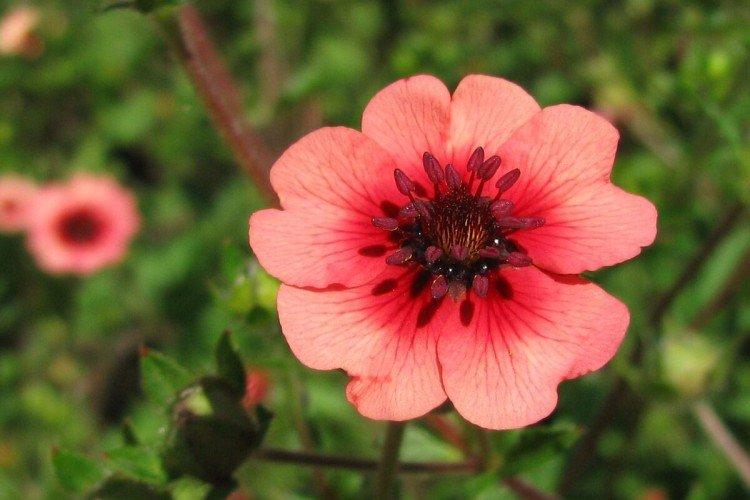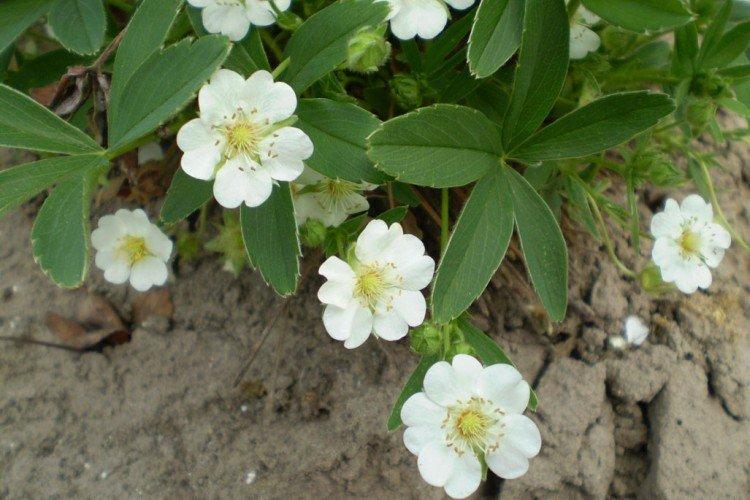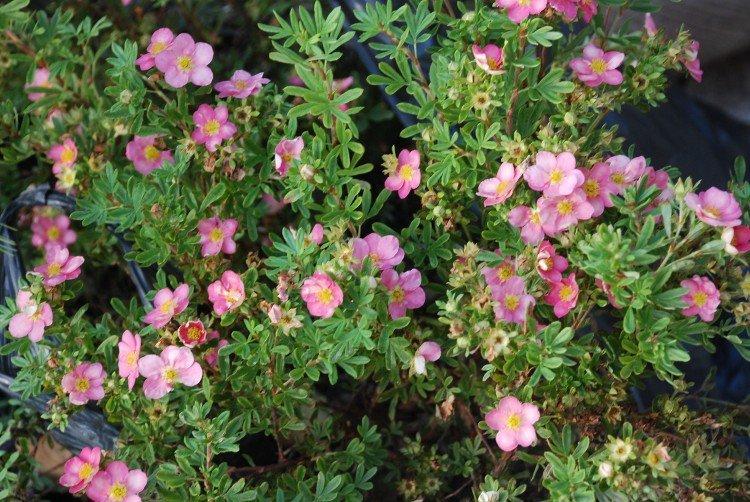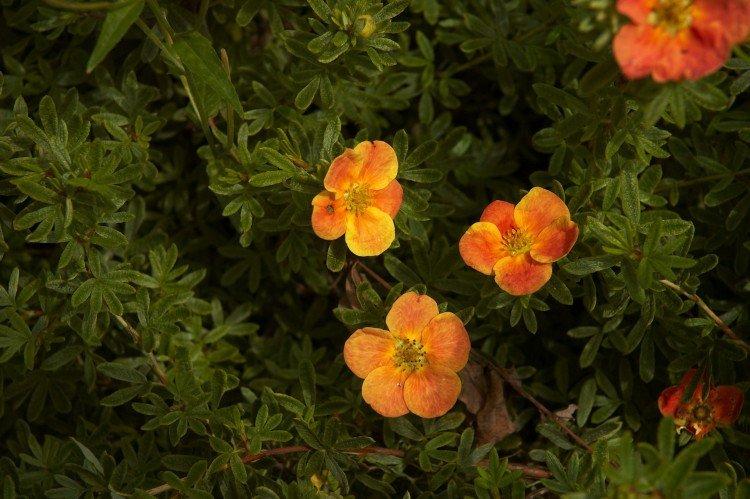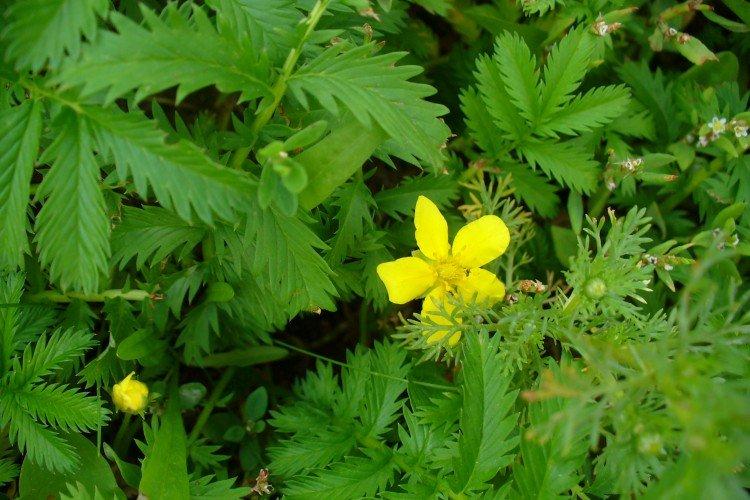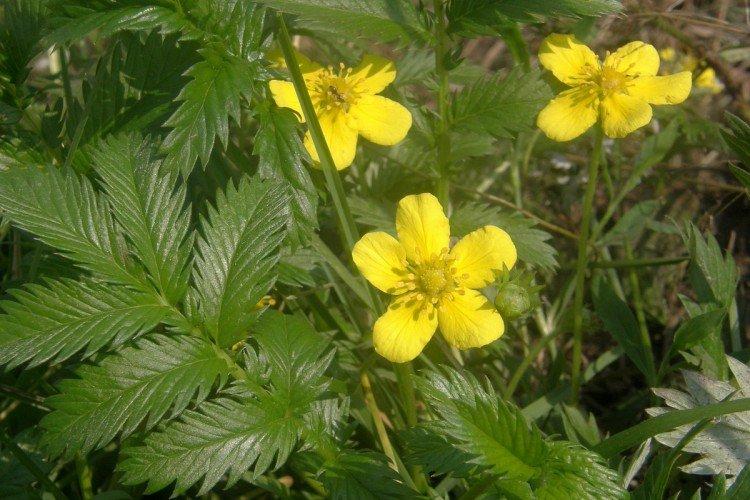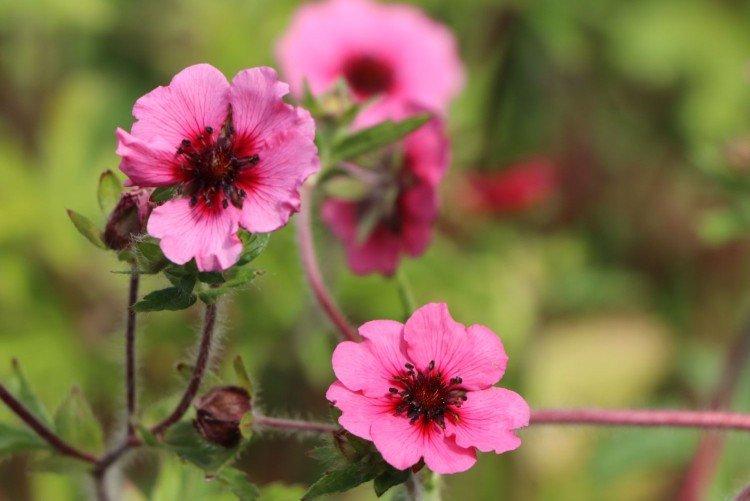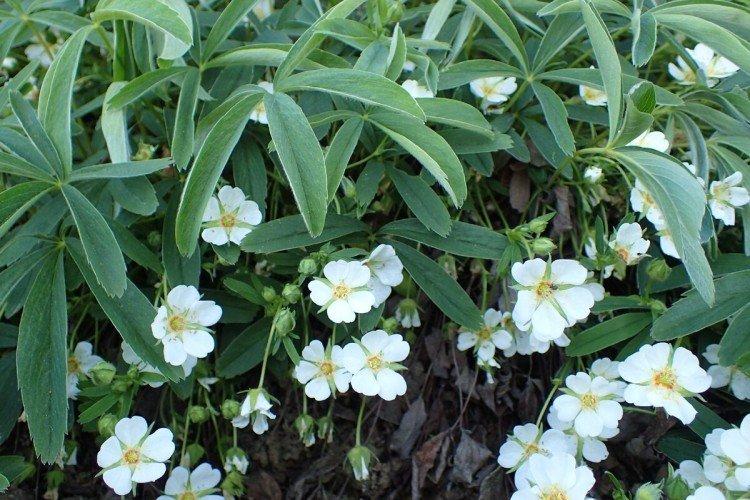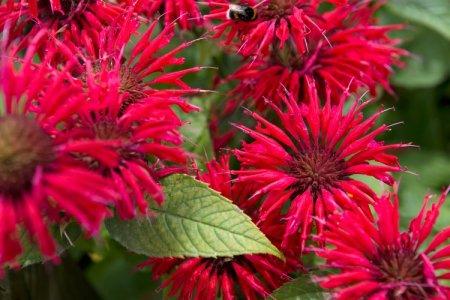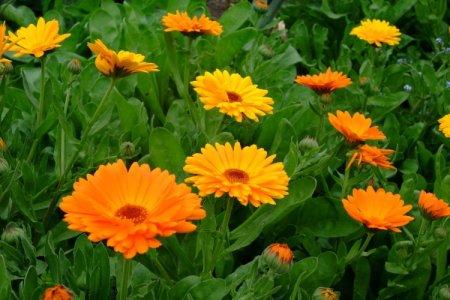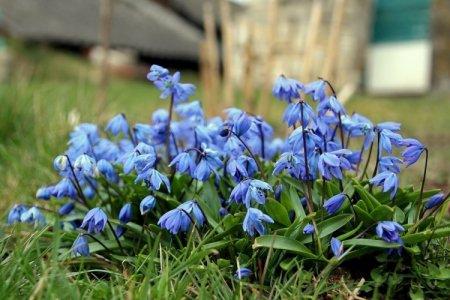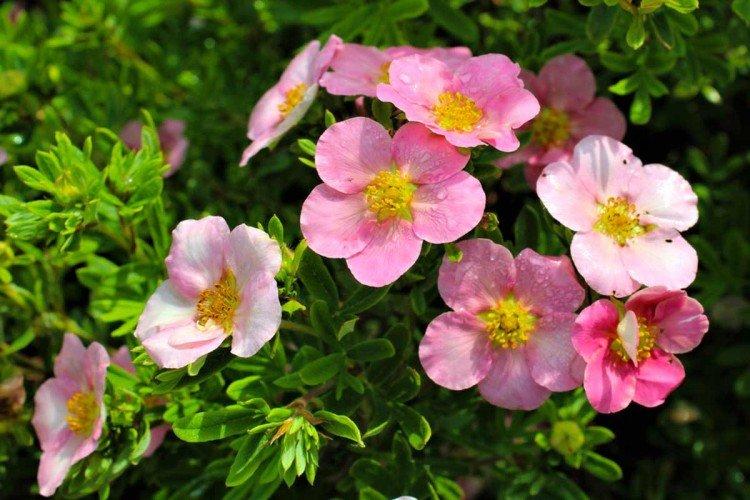
Cinquefoil is one of the best plants for the middle lane. She is quite unpretentious, bright, beautiful and adapts well to different conditions. It is grown not only as an ornamental, but also as a medicinal plant. Let's tell you more!
general information
Cinquefoil belongs to the pink family, and it is one of its largest genera. These are mainly herbaceous plants, but sometimes taller shrubs are also found. Even in ancient times, Potentilla was attributed with a powerful healing power.
In different regions it is called kalgan-grass, Kuril tea, five-leafed leaf and a dozen other names. This is exactly the plant, the aroma of which, according to legend, gave strength to Ilya Muromets.
Potentilla shoots are usually straight, but creeping species are also found. Leaves are separate or pinnate, with a bluish tint. The tallest shrubs grow up to 1.5 m. Bright flowers of all shades of yellow, orange, white and pink are collected in paniculate or umbellate inflorescences.
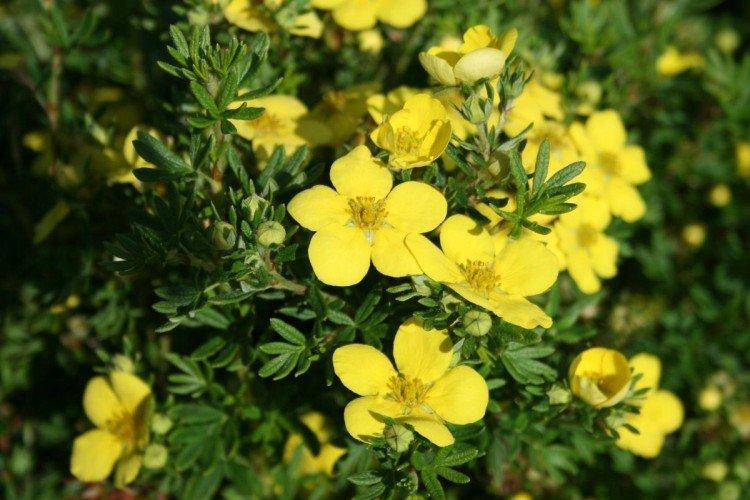
Types of Potentilla
The genus of Potentilla is very large and has over 300 species and forms. But only a small part of them are used in horticultural culture, and that's what we'll talk about!
White cinquefoil
It is a compact herbaceous plant up to 25 cm high, and generally much smaller. Thin shoots are lost against the background of large five-toed leaves, slightly bent along the veins.
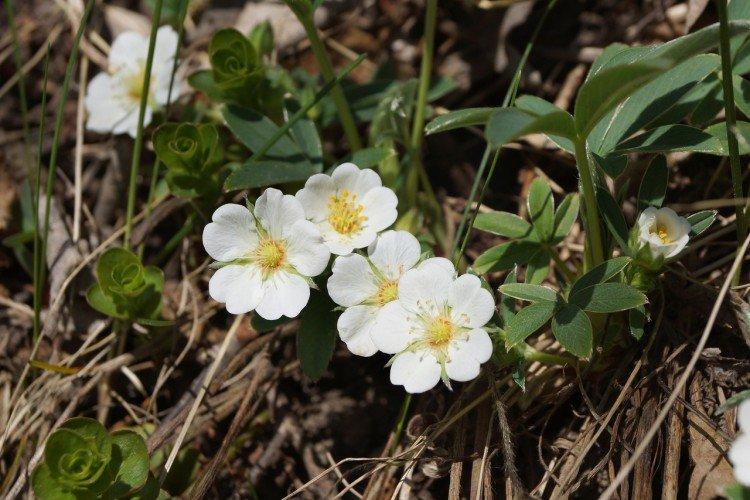
Erect cinquefoil
A powerful woody rhizome helps her adapt to different conditions. It is a medium-sized species up to 50 cm in height with golden axillary flowers.
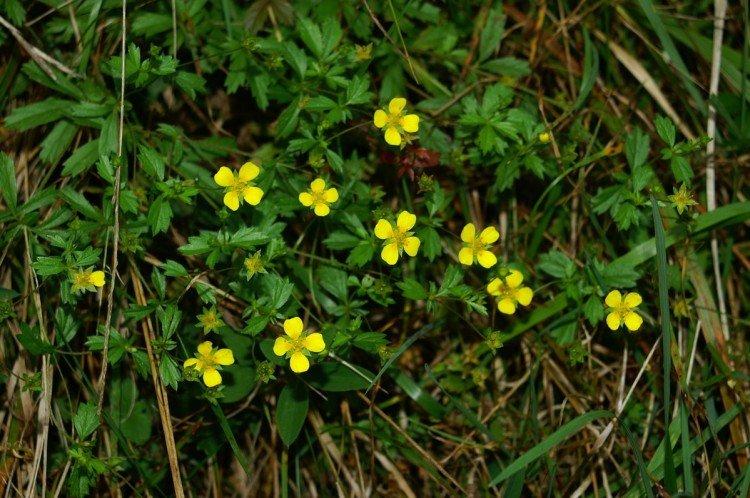
Shrub cinquefoil
It is a European and Asian species that is highly resistant to frost. The dense bush is very tall - up to 1-1.5 m. Gradually the shoots become lignified.
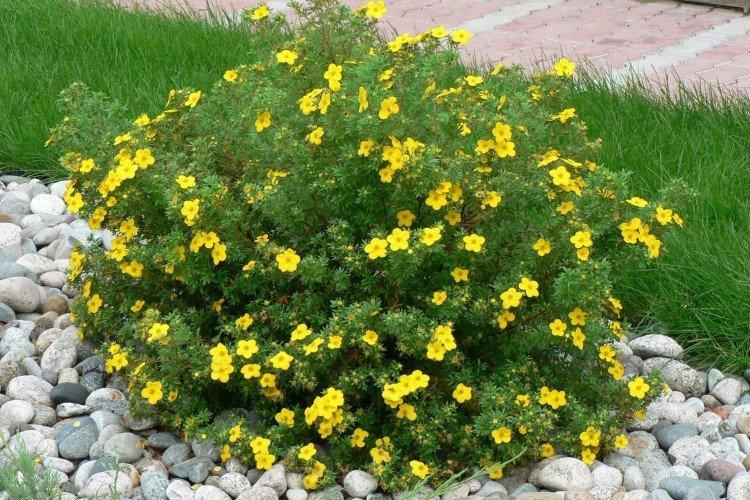
Silver cinquefoil
It is distinguished by a characteristic silvery shade of fleecy shoots that feel felt to the touch. Dark green leaves and sunny yellow flowers contrast sharply with them.
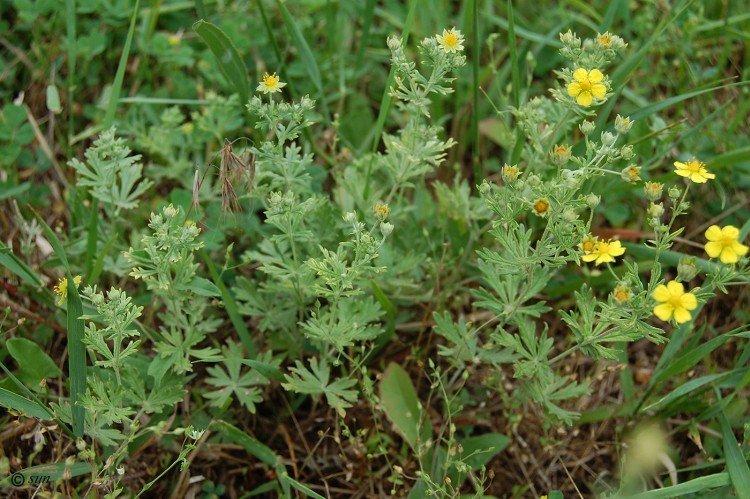
Goose cinquefoil
Creeping shoots with carved dissected leaves resemble openwork lace. Potentilla goose is decorative throughout the season, and at the beginning of summer it is also covered with single yellow flowers.
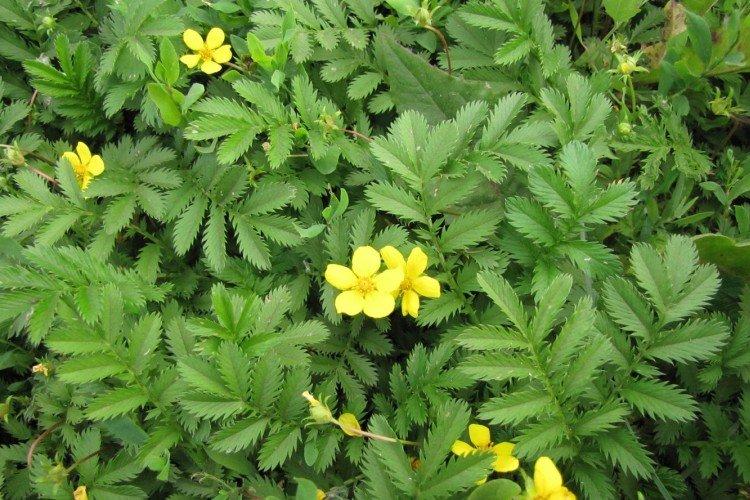
Nepalese Potentilla
An unusual decorative look with interesting heart-shaped petals in all shades of pink and coral. The height of the perennial is 30-50 cm, and the diameter of the flowers is up to 3 cm.
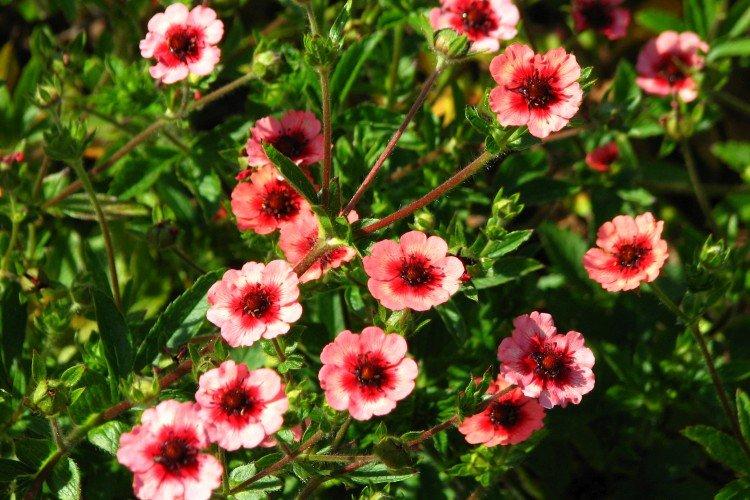
Potentilla care
Almost all types of Potentilla are as indifferent to growing conditions as possible. Only certain varieties, like brilliant, prefer southern regions and dry soils.
Temperature and lighting
Choose a bright and evenly lit area that falls into light partial shade after lunch. Sometimes there are more shade-loving species, for example, white cinquefoil.
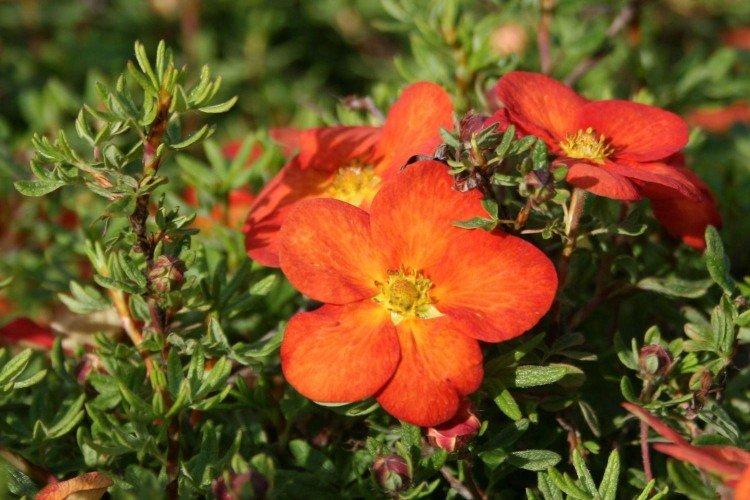
Watering
Cinquefoil does not tolerate excessive drying out of the soil, therefore, stable watering is vital for it. Use warm water and water the plantings in the early morning or evening. During dry periods, the frequency increases up to 1-2 times a week.
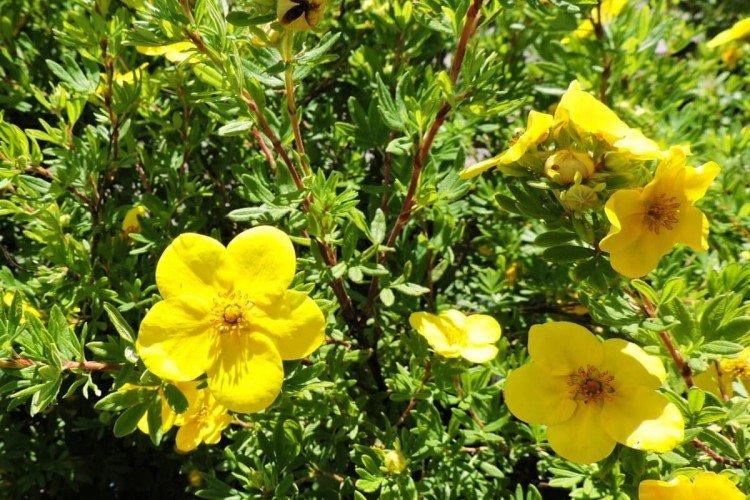
The soil
The soil should be acidic or slightly acidic, but with a small amount of lime in the composition. And also - nutritious, loose and with very good drainage, so that moisture does not stagnate at the roots. This is especially true for plants in shady areas.
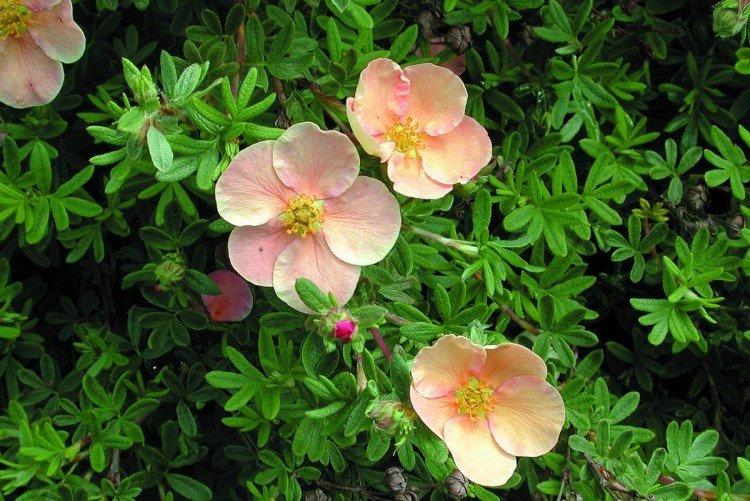
Fertilizers and feeding
To make the cinquefoil grow even better, it is regularly fed with potassium and phosphorus. Start in the spring and apply fertilizer every 3-4 weeks. Sometimes it is possible to replace the mineral mixture with organic matter or ash.
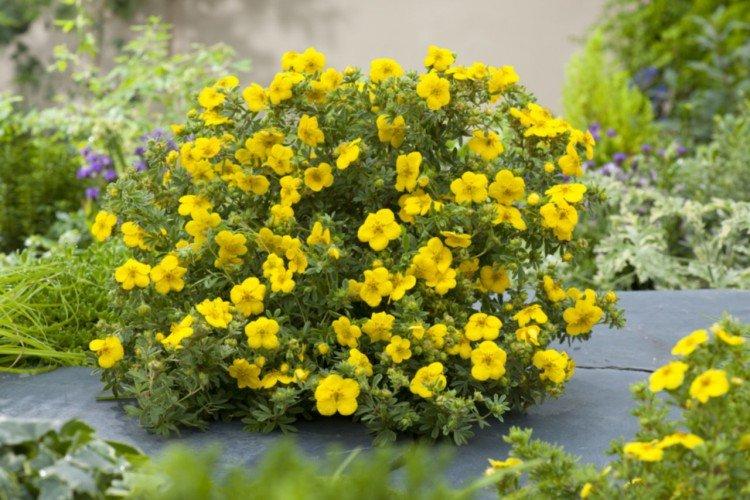
Pruning
You need to cut the cinquefoil often and regularly. In spring and autumn, sanitary pruning is carried out to remove damaged shoots. Make sure that the bushes are not too thick, and if you wish, you can change their shape. Spring pruning is also needed so that later the plant blooms more actively.
Anti-aging pruning is needed every 4 years.Cut out the oldest shoots and shorten all others to a third. And gradually over the next few years, continue to cut out old branches. The principle is about the same as with roses.
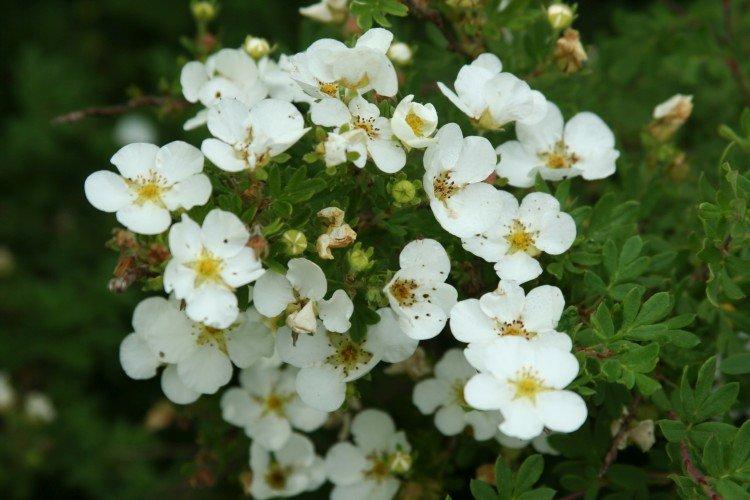
Wintering
Annual species for the winter are simply cut off and dug up with the soil. Perennials winter well in the ground without additional preparation. Young bushes should be covered with a special non-woven material.
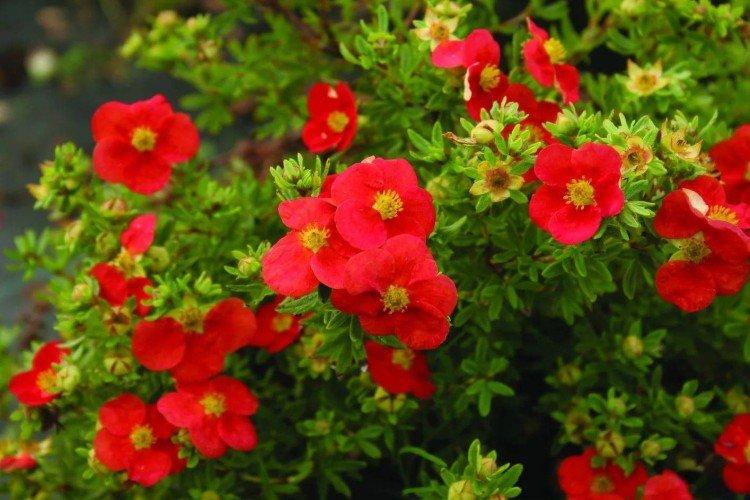
Planting and reproduction of Potentilla
Varietal varieties are best propagated by seed in order to maintain the main characteristics. We advise you to germinate them with seedlings at the end of March in a sandy-peat substrate under a film. The optimum temperature is about 20 degrees. After the seedlings emerge, the shelter can be removed, and by May the seedlings can be transplanted outside. But keep in mind that they will bloom in a couple of years. The distance between the bushes is 50-60 cm.
A mature plant can be effectively propagated by division by the end of autumn. Dig up the bush and carefully cut the root, leaving several points of growth on each division. Treat the cut with charcoal or ash and immediately plant the bushes until they are dry.
In the first half of summer, Potentilla is propagated by cuttings. Take healthy green shoots 12-15 cm each, cut off the leaves, soak them in a rooting machine and plant them directly into the ground in the shade under the jar. After a couple of weeks, the shoot will take root and begin to grow gradually.
In addition, Potentilla reproduces by layering. It is enough to slightly cut, press to the ground and sprinkle any healthy shoot with soil. With regular watering, in a month, it will take root, and it can be transplanted.
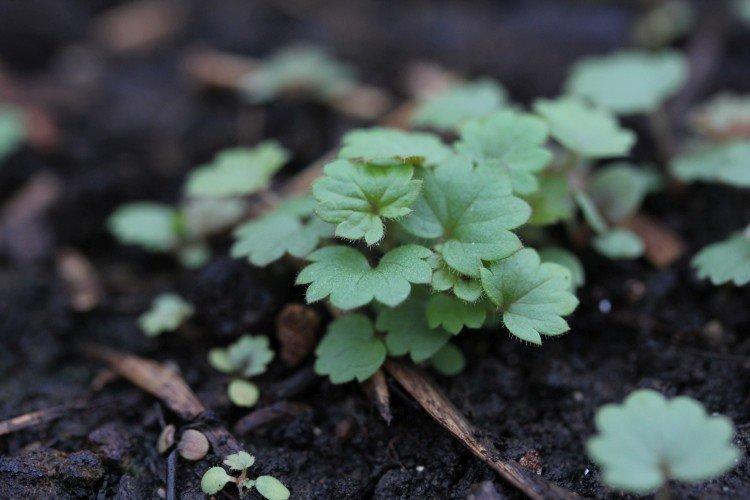
Pest and disease control
There are almost no problems with cinquefoil, and it generally scares away pests. But you should not plant it near coniferous trees, because then it often suffers from a fungus. Especially from rust, which must be removed with Bordeaux liquid and other preparations.
Due to too high humidity, powdery mildew and spotting occasionally develop for a long time. Cut off damaged leaves and shoots and treat the cinquefoil with fungicides. Of the pests, only scoops are a serious threat, but special preparations also help from them.
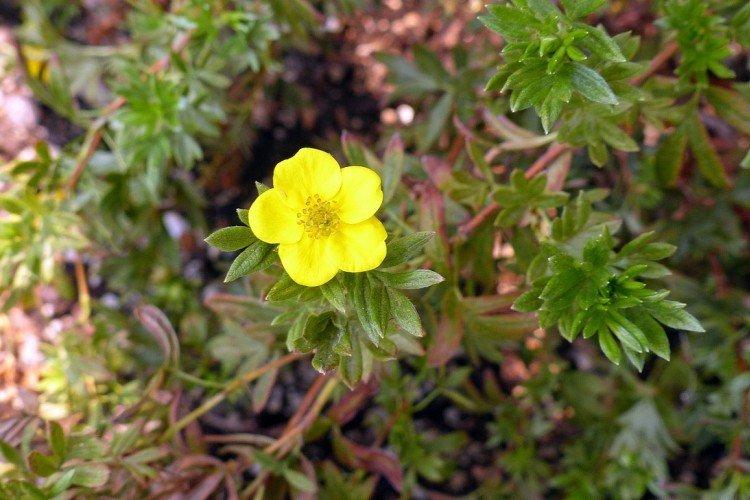
Cinquefoil - photo
If it seems to you that Potentilla is not very remarkable, then just look at how impressive its lush flowering thickets look in real life!
